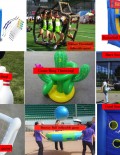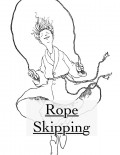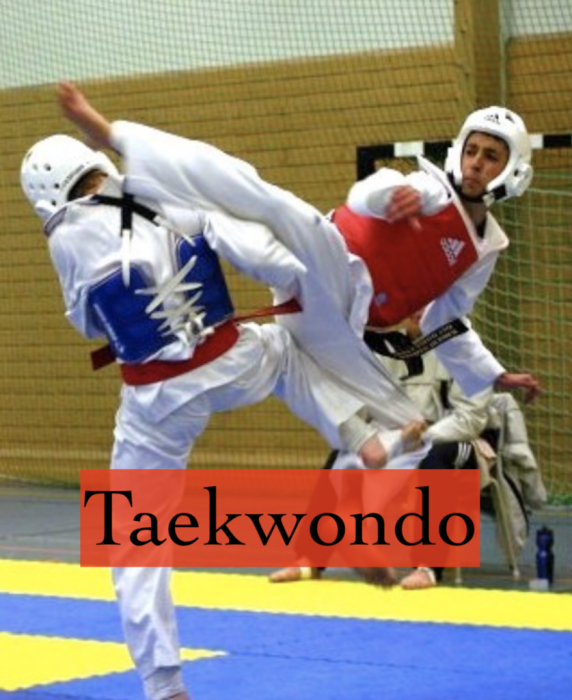Game Description
Introduction & basic pointers from: https://en.wikipedia.org/wiki/Taekwondo
Taekwondo, Tae Kwon Do or Taekwon-Do (Korean 태권도/跆拳道 [tʰɛ.k͈wʌn.do] (![]() listen), English pronunciation /ˌtaɪkwɒnˈdoʊ/,[2][3] or /ˌtaɪˈkwɒndoʊ/[4]) is a Korean martial art, characterized by its emphasis on head-height kicks, jumping and spinning kicks, and fast kicking techniques.
listen), English pronunciation /ˌtaɪkwɒnˈdoʊ/,[2][3] or /ˌtaɪˈkwɒndoʊ/[4]) is a Korean martial art, characterized by its emphasis on head-height kicks, jumping and spinning kicks, and fast kicking techniques.
Taekwondo is a combative sport and was developed during the 1940s and 1950s by Korean martial artists with experience in martial arts such as karate, Chinese martial arts, and indigenous Korean martial arts traditions such as Taekkyon, Subak, and Gwonbeop.[5][6] The oldest governing body for Taekwondo is the Korea Taekwondo Association (KTA), formed in 1959 through a collaborative effort by representatives from the nine original kwans, or martial arts schools, in Korea. The main international organisational bodies for Taekwondo today are the International Taekwon-Do Federation (ITF), founded by Choi Hong Hi in 1966, and the partnership of the Kukkiwon and World Taekwondo (WT, formerly WTF), founded in 1972 and 1973 respectively by the Korea Taekwondo Association.[7] Gyeorugi ([kjʌɾuɡi]), a type of full-contact sparring, has been an Olympic event since 2000. The governing body for Taekwondo in the Olympics and Paralympics is World Taekwondo.
Taekwondo is characterized by its emphasis on head-height kicks, jumping and spinning kicks, and fast kicking techniques. In fact, World Taekwondo sparring competitions award additional points for strikes that incorporate spinning kicks, kicks to the head, or both.[17] To facilitate fast, turning kicks, Taekwondo generally adopts stances that are narrower and taller than the broader, wide stances used by martial arts such as karate. The tradeoff of decreased stability is believed to be worth the commensurate increase in agility, particularly in Kukkiwon-style Taekwondo.
Theory of power
The emphasis on speed and agility is a defining characteristic of Taekwondo and has its origins in analyses undertaken by Choi Hong Hi. The results of that analysis are known by ITF practitioners as Choi’s Theory of Power. Choi based his understanding of power on biomechanics and Newtonian physics as well as Chinese martial arts. For example, Choi observed that the kinetic energy of a strike increases quadratically with the speed of the strike, but increases only linearly with the mass of the striking object. In other words, speed is more important than size in terms of generating power. This principle was incorporated into the early design of Taekwondo and is still used. [9] [18]
Choi also advocated a relax/strike principle for Taekwondo; in other words, between blocks, kicks, and strikes the practitioner should relax the body, then tense the muscles only while performing the technique. It is believed that the relax/strike principle increases the power of the technique, by conserving the body’s energy. He expanded on this principle with his advocacy of the sine wave technique. This involves raising one’s centre of gravity between techniques, then lowering it as the technique is performed, producing the up-and-down movement from which the term “sine wave” is derived. [18] The sine wave is generally practiced, however, only in schools that follow ITF-style Taekwondo. Kukkiwon-style Taekwondo, for example, does not employ the sine wave and advocates a more uniform height during movements, drawing power mainly from the rotation of the hip.
The components of the Theory of Power include:[19]
- Reaction Force: the principle that as the striking limb is brought forward, other parts of the body should be brought backwards in order to provide more power to the striking limb. As an example, if the right leg is brought forward in a roundhouse kick, the right arm is brought backwards to provide the reaction force.
- Concentration: the principle of bringing as many muscles as possible to bear on a strike, concentrating the area of impact into as small an area as possible.
- Equilibrium: maintaining a correct centre-of-balance throughout a technique.
- Breath Control: the idea that during a strike one should exhale, with the exhalation concluding at the moment of impact.
- Mass: the principle of bringing as much of the body to bear on a strike as possible; again using the turning kick as an example, the idea would be to rotate the hip as well as the leg during the kick in order to take advantage of the hip’s additional mass in terms of providing power to the kick.
- Speed: as previously noted, the speed of execution of a technique in Taekwondo is deemed to be even more important than mass in terms of providing power.
Typical curriculum
While organizations such as ITF or Kukkiwon define the general style of Taekwondo, individual clubs and schools tend to tailor their Taekwondo practices. Although each Taekwondo club or school is different, a student typically takes part in most or all of the following: [20]
- Forms (pumsae / poomsae 품새, hyeong / hyung 형/型 or teul / tul 틀): these serve the same function as kata in the study of karate
- Sparring (gyeorugi 겨루기 or matseogi 맞서기): sparring includes variations such as freestyle sparring (in which competitors spar without interruption for several minutes); seven-, three-, two-, and one-step sparring (in which students practice pre-arranged sparring combinations); and point sparring (in which sparring is interrupted and then resumed after each point is scored)
- Breaking (gyeokpa 격파/擊破 or weerok): the breaking of boards is used for testing, training, and martial arts demonstrations. Demonstrations often also incorporate bricks, tiles, and blocks of ice or other materials. These techniques can be separated into three types:
- Power breaking – using straightforward techniques to break as many boards as possible
- Speed breaking – boards are held loosely by one edge, putting special focus on the speed required to perform the break
- Special techniques – breaking fewer boards but by using jumping or flying techniques to attain greater height, distance, or to clear obstacles
- Self-defense techniques (hosinsul 호신술/護身術)
- Learning the fundamental techniques of Taekwondo; these generally include kicks, blocks, punches, and strikes, with somewhat less emphasis on grappling and holds
- Throwing and/or falling techniques (deonjigi 던지기 or tteoreojigi 떨어지기)
- Both anaerobic and aerobic workout, including stretching
- Relaxation and meditation exercises, as well as breathing control
- A focus on mental and ethical discipline, etiquette, justice, respect, and self-confidence
- Examinations to progress to the next rank
- Development of personal success and leadership skills
Though weapons training is not a formal part of most Taekwondo federation curricula, individual schools will often incorporate additional training with staffs, knives, sticks, etc.



